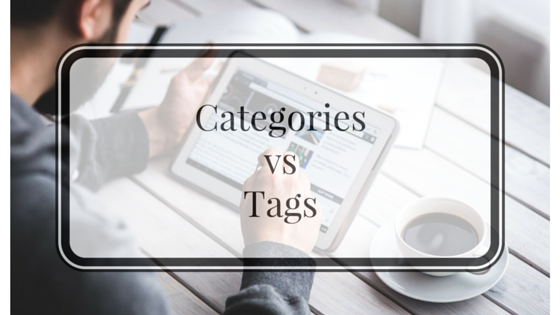The online environment is so crowded that it seems rather impossible to stand out, when everyone is standing elbow-to-elbow trying to get users’ attention. The cruel truth for both companies’ and independent blogs is that if no one sees you, you might as well not exist. That does not mean that you should give up trying, though, just that you should use the right tools. Among those tools are definitely categories and tags that are making the users browse through your content much easier, and furthermore enhancing the visibility of your website. If you cannot wrap your head around the differences and functions of these two, read on to get some clarity.

Two Sides of the Same Coin
Categories and tags are not the same, but they are not very different either. After all, they both have the same functions of improving the user experience and boosting the site’s visibility. Categories are general topics that can be found on website, and therefore a wider concept than tags. Tags, on the other hand, are specifically tied to one post and in charge of pointing out its distinctiveness. For example, if the category is ‘travel’, tags could be ‘beach’, ‘Mediterranean’, ‘Spain’, ‘Majorca’, etc.
Creating Categories
Most people create categories ad hoc, as they are building their blogs, but that can be a big mistake in terms of search engine optimisation according to SEO company from New York. So, before you start posting on your website, make sure you have a categorizing system. Think about the topics you will cover on your blog, and how you, as a reader, would expect for that topics to be categorized. If some new category comes up along the way, you can add it.
Structuring the Categories
Categories must be structured in a way that will place every post into at least one category. If you feel that some posts are too complicated, you can use sub-categories to organize hierarchical topics. WordPress and most of the other platforms will allow you to include up to three levels of categories. To make it easier for users to find their way in those complicated topics and categories use breadcrumbs on each post.

Make Categorizing Clear
The categories should be clear to an average user who has never before visited your blog. Use simple descriptive names and capitalize titles. It is never a good idea to have too many categories, but that will depend on the topics of your website. Although some posts can be in more than one category, you should minimize the number of such posts, and follow the rule one post – one category.
Creating Tags
Creating tags is much easier than creating categories. Her you are free to listen to your intuition and describe the post with several words and phrases. The only thing that you should keep your eye on is that tags should still help user to navigate your website. The purpose of tag is not only to label one text but to create a link between the similar ones. So, use tags that can be applied to more than one post. Also, use lowercase when writing tags to make them easier to differ from categories.
Be Descriptive and use Alt Tags
Tags should describe your text in shorter words, but you should do much more than that to get in favor of Google’s search engine. Consider using alt tags for images because they are placing the image in a context related to your text. If some of your alt tags contain your focus keyword you have a chance for better visibility. That does not mean you should spam the focus keyword into every alt tag. Just find a good related image on platforms or make your own photograph for your posts in which it will make sense to have the keyword in alt text.
Don’ts of Tagging
There are some things you simply should not do when it comes to tagging. Do not be too specific, one tag should not be used only once in your posts, but be specific enough to distinct tag from a category (do not use tag that is duplicate of the category). Although there are no specific rules about the number of tags, you should never use too many. Be somewhat consistent when it comes to number of the tags in your posts.
Tags and categories are the skeleton of your website, and the bricks of your archive. Use them wisely and you will only benefit.

